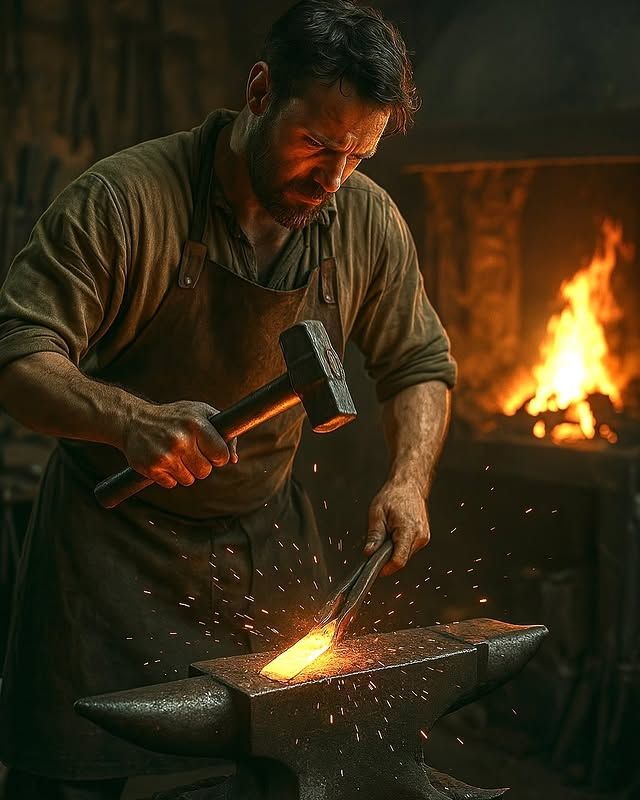The History of Turkish Blade Craftsmanship: A Legacy Forged in Fire and Tradition
The story of Turkish bladesmithing is not merely the history of a craft it is the living heritage of a nation shaped by fire, steel, and artistry. Every knife forged by a Turkish master carries more than sharpness; it holds the spirit of centuries, the discipline of generations, and the elegance of a culture where strength and beauty coexist.
From the windswept steppes of Central Asia to the grand forges of the Ottoman Empire, Turkish blades have evolved into symbols of honor, precision, and timeless craftsmanship.
From the Steppes to Anatolia: The Birth of a Blade Tradition
The origins of Turkish bladesmanship trace back to the nomadic Turkic tribes of Central Asia, where survival depended on skill and steel. For these early craftsmen, the knife was far more than a simple cutting tool it was a means of survival, protection, and identity.
As the Turks migrated westward, their mastery of metalworking grew. They adopted and refined forging techniques from neighboring civilizations particularly the Chinese, Persian, and Byzantine traditions and gradually forged a distinctive Turkish style that emphasized balance, resilience, and form.
By the time the Seljuk Turks settled in Anatolia, bladesmithing had become a respected art form. Each region developed its own unique characteristics, reflecting the local culture and materials available.
The Ottoman Golden Age: When Steel Became Art
During the Ottoman Empire, Turkish blade craftsmanship reached its golden age.
Swords and knives were no longer just tools of war they became symbols of prestige, mastery, and refinement.
Each city developed its own school of craftsmanship:
-
Sivas knives were known for their razor-sharp precision and balanced form.
-
Yatağan blades, with their iconic forward-curved design, became the trusted weapon of Ottoman soldiers.
-
Bursa and Istanbul blades often featured intricate gold and silver engravings, transforming each piece into a jewel like work of art.
Ottoman smiths achieved remarkable advancements in metallurgy folding and layering steel to enhance both strength and flexibility. Every blade was not only a weapon but a reflection of the empire’s technical ingenuity and aesthetic sensibility.
In the 16th and 17th centuries, Ottoman swords and knives gained fame across Europe and the Middle East. They were prized for their flawless cutting ability, elegant curvature, and handcrafted decorations making Turkish blades a status symbol among nobles and warriors alike.
The Signature of a Master: The Soul in the Steel
In Turkish tradition, a blade is more than forged metal it is the extension of the master’s soul. Every hammer strike carries rhythm and intention; every detail is shaped with patience and devotion. The process is as much spiritual as it is technical.
Traditional Turkish bladesmiths relied on fire, anvil, hammer, and experience. No machine could replicate the subtle instincts passed down from master to apprentice. Each handmade knife or sword bore the unique “signature” of its maker an invisible mark recognized by those who understood true craftsmanship.
Even today, the balance, weight, and feel of a handmade Turkish knife are unmistakable.
They embody centuries of refinement a quiet dialogue between the craftsman, the fire, and the steel itself.
From Tradition to Modern Artistry
As industrialization spread through the 20th century, many artisanal trades faded away. Yet Turkish bladesmithing survived thanks to families and workshops who continued to forge steel the old way, preserving a craft that defines national identity.
Cities like Sivas, Gaziantep, Bursa, and Denizli remain centers of knife-making today, where artisans blend ancestral techniques with modern precision.
Brands such as Çakıroğlu Knives, founded in 1960, carry this legacy into the modern era.
Combining hand-forging methods with advanced materials like N690 Böhler steel, fine brass details, and gold engravings, Çakıroğlu continues to produce blades that are not only tools but collectible works of art.
Every knife tells a story: of endurance, artistry, and the unbroken link between past and present. Each one is a testament to the Turkish philosophy that true quality is born from the hands, not the machines.
Steel, Heritage, and Soul: The Meaning of a Turkish Blade
A Turkish knife is a mirror of its maker and a vessel of culture. Its beauty lies in its balance, its sharpness, and the centuries of wisdom embedded in every detail.
To hold a handmade Turkish knife is to hold history itself to feel the fire, the rhythm, and the patience of generations who shaped the art of the blade. That is why today, collectors, chefs, and enthusiasts around the world continue to seek authentic Turkish blades not only for their quality but for their story.
In every forged edge and engraved line lives the same spirit that once armed warriors, served kings, and inspired artists.
The legacy of Turkish bladesmiths endures forged in fire, tempered by time, and perfected by human hands.



